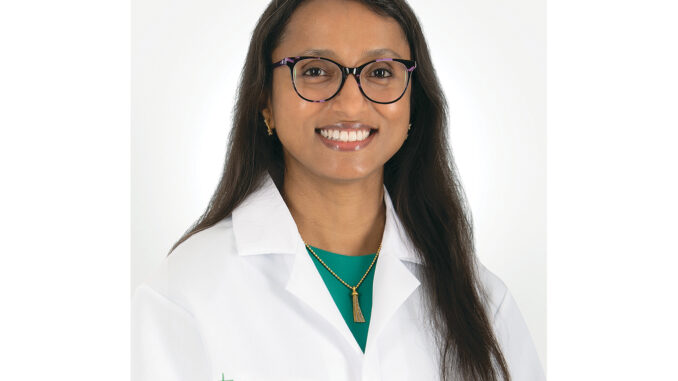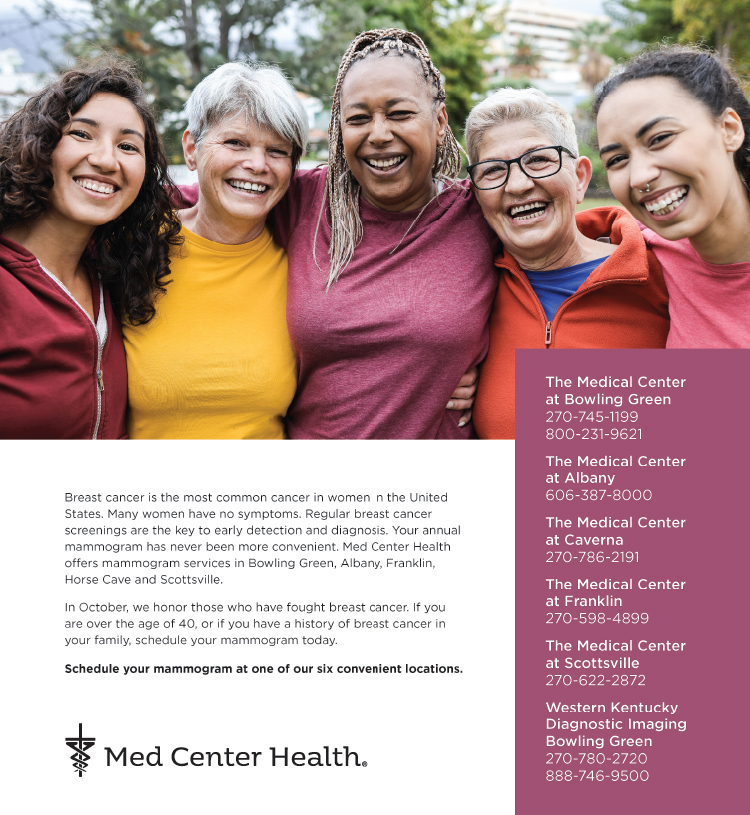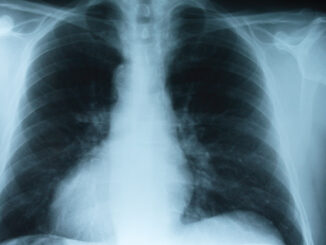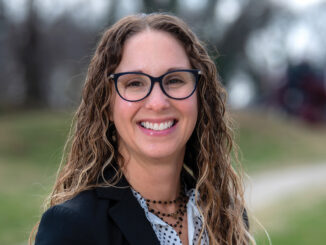
In recent years, health professionals have urged women to be “self-aware” when it comes to preventing breast cancer. Being self-aware means knowing how your breasts normally look and feel. If you are self-aware, you can notice early on when something isn’t quite right.
“You know your body the best,” says Shebna Unes, M.D., OB/GYN with Women’s Health Specialists. “You are the best advocate for your health. Even if you are not sure what exactly is wrong – but if you sense something is – don’t hesitate to bring it to the attention of your provider. He or she may be able to guide you and make a shared decision about the next step in your care.”
To be self-aware, there are three basic things to keep in mind:
•Know your risk. This includes things you have control over and things you don’t.
•Know what is normal for you and what changes to look and feel for.
•Get screened. The American Cancer Society recommends women age 40-44 have the choice of getting a yearly screening mammogram; women age 45-54 get screened every year; and women age 55 and older have mammograms every two years or yearly depending on their risk.
Breast cancer risk
There are some risks you can’t do anything about – such as being over 50, a family history of breast or ovarian cancer, having dense breasts, or your age when menstruation began and ended – but there are also many risk factors you can control.
•Physical activity. Being active not only reduces the risk of cancer, but other health problems as well, such as heart disease and diabetes.
•Healthy weight. Older women who are overweight or obese are at greater risk of getting breast cancer than those who are a normal weight.
•Drinking alcohol. All alcoholic drinks, including wine and beer, are linked to cancer. The more you drink, the higher your risk. The Centers for Disease Control and Prevention (CDC) recommends one drink or less a day for women.
•Taking hormones. Some forms of hormone replacement therapy (HRT) and oral contraceptives have been linked to breast cancer. Talk to your doctor about whether or not to take hormones for birth control or HRT.
Another risk factor you may or may not have control over is your reproductive history. If your first pregnancy was after age 30, you did not breastfeed or you never had a full-term pregnancy, your risk of breast cancer may be higher.
What’s normal? What’s not?
Breasts can normally feel lumpy and bumpy. One breast may look slightly larger than the other. Experts suggest women become aware, not only of how their breasts look when healthy, but of how they feel around the nipple, over the entire breast and under the armpits. If you notice any of the following things, contact your doctor right away:
•Changes in how they look – especially if noticed with arm movement
•Irritation, dimpling or puckering, or veins that stand out more than usual
•Pain, redness or flaky skin around the nipple or pulling in of the nipple
•Lumps or thickening in either breast that feels different from the other breast
•Swelling or lumps under the armpit or around the collarbone
If you need a gynecologist or obstetrician, Women’s Health Specialists is accepting new patients. To make an appointment, call 270-781-0075 or toll free 866-997-5784. Learn more at MedCenterHealth.org.
-submitted by Med Center Health





